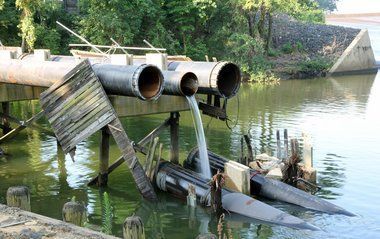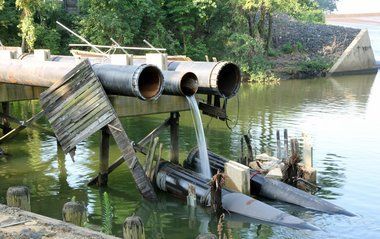Foundation Fail: Green Band-Aids Will Not Put a Dent In Water Infrastructure Crisis
Jersey City Manifesto An Exercise In Magical Thinking Under the Guise of Leadership
Whitman & Dodge Foundation should dust off Professor Burchell’s 2001 Infrastucture Impact Assessment from the State Plan
Where Was Dodge 25 years ago when Gov. Florio issued Executive Order #114?
[Updated and corrected : 6/23/14 – NJ Spotlight reports today on their Friday panel discussion. I did not attend the event. I find it very interesting that today’s Spotlight story’s focus is on high costs and the need for significant rate increases is the exact opposite of the story below. So I went back and re-read the Dodge/NJ Future Report (as I wrote below, I first read the report “quickly”) and discovered a serious error, which I correct below. I stand by the “green band-aid” and “regulatory driver” and Zimmer criticisms, but not the “no need for rate increase” claims.- end update].
Last week, I ridiculed NJ Environmental Infrastructure Trust Executive Director Zimmer’s testimony to the legislature for downplaying the need for major new revenue sources by implying that NJ’s $40+ billion water infrastructure deficit and crisis could be addressed by “efficiency” and cost cutting.
Amazingly, as the DEP panel gained momentum in their testimony, it all got so over the top that at one point, citing Camden County as a model, NJEIT Director Zimmer suggested that infrastructure investments would LOWER user rates – he implied that lower interest payments on NJEIT loans, more efficient equipment (e.g. energy costs savings) and budget CUTS essentially would pay the debt service.
For a $40 billion deficit? Are you kidding me?
I wonder if that’s the kind of “financial” approach that Zimmer pursued in his private sector days as an investment banker working in “structured finance”.
Of course, Zimmer can crunch numbers and knows that “efficiency” and cuts can not possibly put even a minor dent in the deficit.
But politically, he has to say that because his boss, Gov. Christie, has flat out vetoed any new local or state revenues to pay for the huge deficit – things like water taxes or ratepayer increases in water user fees.
So, given the obvious political basis for Zimmer’s statement, I was rather surprised to learn that Zimmer’s spin was not unique, and seems to be coming from a larger, Foundation funded, playbook.
Specifically, in a set up piece for their Round Table panel on Friday, NJ Spotlight reported (following a quote by Christie Whitman, of all people)
A proposed “agenda for change’’ laid out by policymakers who met in Jersey City last month suggested a number of steps, including working regionally, identifying a variety of funding sources, and implementing “green first’’ solutions wherever possible. That third recommendation involves using vegetation and soil to manage rainfall, rather than pipelines.
So, I hit the link and quickly read the Jersey City Manifesto (JCM): “An Agenda For Change for NJ’s Urban Water Infrastructure“.
Zimmer is not alone in his denial of the need to raise lots of new revenues and his delusions of “efficiency” and cost cutting.
The Jersey City Manifesto (JCM) – another Dodge Foundation product – shares those delusions, PLUS magical thinking about low or no cost “green” solutions:
Because green infrastructure solutions have the potential to control some of the flows that cause CSOs at the lowest cost with multiple benefits, municipalities should take a “green first” approach, including mapping strategic locations for green infrastructure projects, making local policy changes that facilitate implementation and building demonstration projects that make neighborhood benefits tangible.
[Correction – the Dodge/NJ Future Report does identify the need for rate increases, my initial “quick” read missed this:
Diversify Funding Sources.
Even with optimization and effective asset management, the cost of controlling CSOs and upgrading other aspects of urban water infrastructure will be expensive and will need to be phased in over time, with most cities and utilities ultimately requiring new and/or increased revenue streams to meet these challenges. – end correction]
In addition to the magical thinking about green band-aids, the JCM calls for bold leadership, but amazingly lays out an “Action Agenda” that shares Gov. Christie’s “no new tax” views on the need to generate new revenues to fund the deficit:
Before seeking ratepayer support for investment in major capital improvements, water utilities and departments should take aggressive action to optimize the efficiency and effectiveness of their existing systems and business practices. In addition, these entities should develop and implement asset management plans that sustain efficiency over time. Taking these foundational steps in a visible and transparent manner, and demonstrating the associated cost savings, will help utilities and departments build trust with ratepayers and establish credibility to pursue necessary but costly infrastructure upgrades.
What kind of “leadership” is that?
Dodge thinks water utilities need to “build trust” and “establish credibility” – but they call for no new money and green band-aids as an “Action Agenda” to address a $40 billion infrastructure crisis? [see correction above]
Are you kidding me? You can’t tell people there’s a crisis, but tell them that if we could only cut the fat, they won’t have to pay for it. That’s snake oil, not leadership. [see correction above]
In my book, anyone who says that we face a $40+ billion crisis and in the same breath says we should approach it without new revenue and rate increases has no credibility whatsoever. [see correction above]
Worse, this kind of magical thinking reeks of hypocrisy and reinforces the Gov.’s premise that government and local authorities are at best bloated, wasteful, inefficient and incompetent bureaucracies, and at worst corrupt.
It reinforces transparently racist myths propagated in places like the Highlands that all those black folks in the cities are wasting “our water” that we have to surrender our development rights to provide (I’ve heard this almost verbatim at meetings in the Highlands).
And it will only generate further animosity towards those elite Foundation fed suburban “environmentalists” coming to preach to urban NJ about how to get their infrastructure house in order.
The most likely outcome is that CSO cities will use the low expectations – no new revenues and “low cost” “green infrastructure” – as cover for doing little or nothing. Despite this lack of real action, the Foundations funded “advocates” will continue to be well fed. An agenda for the status quo.
Rather than “playing in traffic”, better that Christie Whitman, the Dodge Foundation, and NJ Future – strong historical backers of the State Plan – dust off Professor Burchell’s 2001 Infrastructure Impact Assessment from the State Plan.
Oh, but they can’t do that either, because – just like a call for new revenues and rate increases – that would embarrass Gov. Christie too. Christie has killed their much loved State Plan.
So, I’ll end on a delicious irony:
For many years, I and many others have criticized the State Plan as “toothless” and worked in vain to give it regulatory teeth in DEP programs. Dodge and State Plan proponents have opposed or not supported those efforts.
So, lets just say it was a jaw dropping moment to read a Report where Dodge, NJ Future, and the State Plan crowd quietly admitted their decades long huge strategic error.
Specifically, the JCM expressly notes that DEP regulations were the “driver” and create an “opportunity”:
the most immediate driver for action is the federal and state regulatory requirement that 21 cities must control combined sewer overflows (CSOs) – a problem caused by aging combined (sanitary and stormwater) sewer systems and exacerbated by increasingly intense rainfall events. In late 2014, the New Jersey Department of Environmental Protection (NJDEP) is slated to issue final permits requiring the responsible cities and utility authorities to develop, adopt and initiate the implementation of CSO Long-Term Control Plans (LTCPs).
Where was Chris Daggett and Dodge 25 years ago when Gov. Florio issued Executive Order #114 on integrating the State Plan in DEP regulations?
So wrong for so long and then they pull the regulatory rabbit out of the hat! Now that’s one mean feat!



